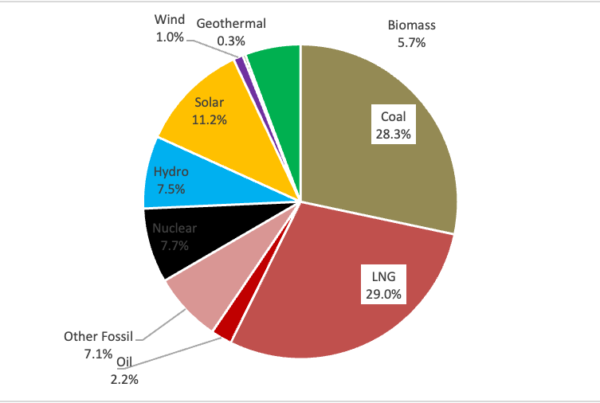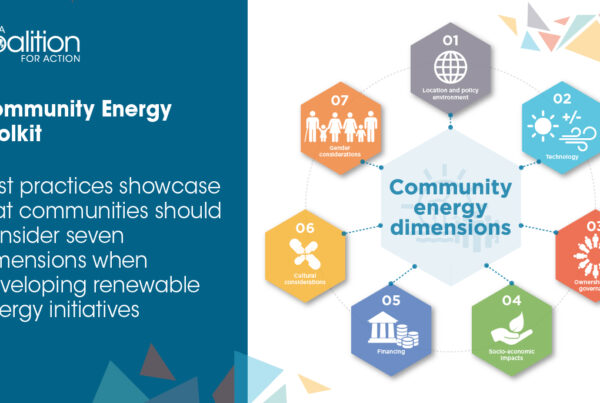Share of renewables electricity in Japan reaches 24%, VRE over 11%
In order to evaluate how much renewable energy is being introduced in Japan, the latest data up to the end of FY2022 on the share of renewable energy in the annual amount of electricity generated and the capacity of renewable energy power generation facilities introduced under the FIT system are presented as preliminary figures.
Summary
- In 2022 (calendar year), the share of renewables in Japan’s total electricity generation including on-site consumption is estimated to be 22.7%, up only slightly from 22.4% in the previous year, and policies for further expansion are required.
- In 2022, solar PV accounted for 9.9% of annual electricity production, up 0.6 percentage points from 9.3% the previous year, and VRE (Variable Renewable Energy, Solar and Wind power) accounted for 10.8%.
- Biomass power generation accounted for 4.6%, up from 4.1% the previous year. On the other hand, wind power generation remained at 0.85%, down from 0.88% the previous year, while geothermal power generation remained virtually unchanged at 0.25% from the previous year. Hydro power generation decreased 0.7 percentage points from the previous year to 7.1%.
- Fossil fuels accounted for 72.4% of the total electricity generated during the year, up from 71.7% the previous year. LNG accounted for 29.9%, down from 31.7% a year earlier, partly due to price hikes, while coal increased to 27.8% from 26.5% a year earlier. On the other hand, nuclear power accounted for 4.8%, down from 5.9% the previous year.
- In Europe, the share of annual electricity generated from renewables will exceed 40% in 2022 in many countries, with an average of 38.4% for the EU27 as a whole, slightly lower than the 39.5% share of electricity generated from fossil fuels due to the Ukraine crisis, etc. The share of VRE will also increase with Denmark’s 60%. The average for the EU27 as a whole is also 22.3%.
- In China, in addition to hydropower, wind and solar power have been rapidly introduced over the past decade, and by 2022, wind power and solar power will account for 9.3% and 4.7% of annual power generation, respectively, on a par with nuclear power, and the VRE share has already reached 14%. The share of renewables, including hydropower, in total electricity generated will reach 30.8%.
- In the electricity supply and demand data for 2022 (calendar year) in Japan, the share of renewables to electricity demand averaged 20.5%, with hourly maximums reaching over 80% for Japan as a whole, with VRE reaching a maximum of 69%. In the Shikoku and Kyushu areas, there were time periods when VRE alone exceeded 100%, while VRE curtailment was occurred in Hokkaido (0.1%), Tohoku (0.4%), Shikoku (0.3%), Chugoku (0.2%), and Kyushu (1.4%), with the national average curtailment rate at 0.3%.
Share of renewables to electricity generated in Japan
The share of total electricity generated in Japan including on-site consumption by power source in 2022 was estimated from the Electricity Survey Statistics[1] and nationwide electricity supply and demand data[2] . As a result, the share of renewables in Japan’s total electricity generation in 2022 was 22.7% as shown in Table 1 and Figure 1.
The share of renewables, which was about 15% in 2016, increased by more than 1 percentage point annually to reach more than 22% by 2021, but only increased by 0.3 percentage points in 2022 (Figure 2). Among these, solar power generation accounted for 9.9% of electricity generated, almost reaching 10%, up from 9.3% in the previous year (2021), and gradually approaching the share (15%) assumed in the power source composition in FY2030 by the Sixth Basic Energy Plan (approved by the Cabinet in October 2021). Together with the 0.85% share of wind power, the share of VRE exceeded 10%, reaching 10.7%, a slight increase from 10.2% in the previous year (2021). As for renewables other than solar power, the share of electricity generated from biomass power was 4.6%, up from 4.1% in the previous year. Wind power, on the other hand, accounted for 0.85%, down slightly from 0.88% a year earlier, while geothermal power remained unchanged at 0.25% from the previous year. Hydroelectricity was 7.1%, down from 7.8% the previous year. By month, the share of electricity generated from renewables was highest in May 2022, reaching 31.3% as shown in Figure 3. In this May, the share of solar PV increased to 14.2%, and the share of VRE reached 15%.
The data for wind power generation is not based on electricity survey statistics, but on the amount of electricity transmitted based on electricity supply and demand data published by electric power companies. In addition, although data from the Electricity Survey and Statistics is used for the amount of electricity generated by photovoltaic power generation, it should be noted that the data is about 10% larger in terms of annual transmission volume than the electricity supply and demand data, so there is a range of estimation for the proportion of photovoltaic power generation. Specifically, the annual amount of electricity generated by PV was 106.1 TWh in the electricity survey statistics, but 85.6 TWh in the amount of electricity transmitted based on electricity supply and demand data. Since the estimate for residential solar power smaller than 10 kW is 3.5 TWh, the combined total is 89.1 TWh, which is more than 10% smaller, resulting in an 8.3% share of solar power generation. The estimated amount of electricity generated from the Electricity Survey and Statistics is the sum of the amount of electricity reported by electric utility companies (retail electric utilities and power producers above a certain capacity) and the amount of electricity received from non-electric utilities, so the value may be larger due to double counting and other factors.
Thermal power generation by fossil fuel, which has been on a declining trend, accounted for 72.4% of electricity generated in 2022, up from 71.7% the previous year, a decrease of about 11 percentage points from 2016 but still at a high level. For coal-fired power, the share decreased from 30.2% in 2016 to 26.5% in 2021 but increased to 27.8% in 2022; for LNG, there is a consistent downward trend from 38.9% in 2016 to 29.9% in 2022. Nuclear power, on the other hand, after going to zero in 2014, increased to 6.5% of electricity generated in 2019 but decreased to 4.3% in 2020, to 5.9% in 2021, and then decreased again to 4.8% in 2022.
Table 1: Renewable energy as a share of total electricity generated in Japan
Source: Compiled by ISEP from power supply survey statistics, etc.
Figure 1: Source of power generation in Japan as preliminary data for 2022
Source: Compiled by ISEP from Electricity Survey Statistics, etc.
I am text block. Click edit button to change this text. Lorem ipsum dolor sit amet, consectetur adipiscing elit. Ut elit tellus, luctus nec ullamcorper mattis, pulvinar dapibus leo.





